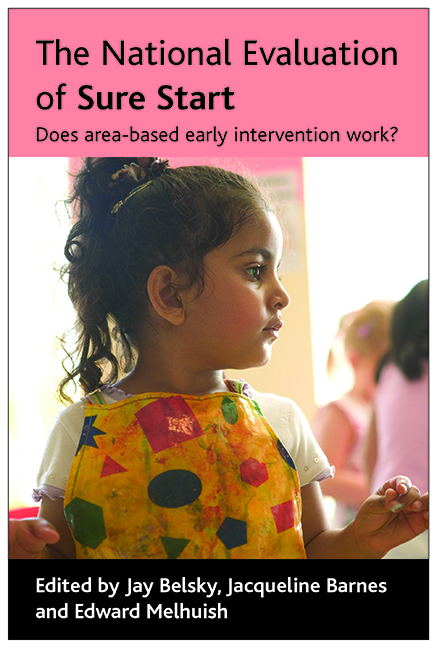Book contents
- Frontmatter
- Contents
- List of tables and figures
- Foreword
- List of abbreviations
- Notes on contributors
- Part One The historical and policy context
- Part Two The local context of Sure Start Local Programmes
- Part Three The implementation of Sure Start Local Programmes
- Part Four The impact of Sure Start Local Programmes
- Part Five Conclusion
- Index
three - The challenge of profiling communities
Published online by Cambridge University Press: 15 September 2022
- Frontmatter
- Contents
- List of tables and figures
- Foreword
- List of abbreviations
- Notes on contributors
- Part One The historical and policy context
- Part Two The local context of Sure Start Local Programmes
- Part Three The implementation of Sure Start Local Programmes
- Part Four The impact of Sure Start Local Programmes
- Part Five Conclusion
- Index
Summary
Most area-based initiatives (ABIs) – of which Sure Start Local Programmes (SSLPs) are a classic example – have needed to face the challenge of translating the concept of ‘deprived areas’ as targets for government intervention into actual boundaries ‘on the ground’. Chapter Two explained that, in the case of SSLPs, this responsibility was largely given to the local agencies who initiated the proposals for the establishment of SSLPs. They were required to identify local communities that contained a significant number of deprived families, had a degree of social coherence and contained a sufficient number of young children to make programmes viable (Glass, 1999). In practice this meant that the boundaries of many SSLPs did not correspond to any pre-existing area boundaries that would normally be used for collecting and disseminating indicators of economic, social, health and crime conditions, such as electoral wards or police beat areas for instance. This chapter describes the use that was made of Geographical Information Systems (GIS) to identify young children living in the SSLPs to take part in the Impact Study of the National Evaluation of Sure Start (NESS), and to adapt existing data or commission new data that would allow the nature of the SSLPs to be described by the Local Context Analysis (LCA) team, while also allowing assessment of their change over the lifetime of the evaluation.
The first stage in this process was to translate programme boundaries from paper maps into a digital form that could be used within GIS software. The method used for this and the challenges faced in its application are described. The second stage was to identify a key that could link households living within an SSLP to records that would identify the presence of young children and that could be used to link the SSLP's households to other types of data that could be used to derive profiles of the SSLPs. This key was the postcode system applied to all UK addresses. Postcodes could be used within a GIS to identify households within the programme area and also to assess the degree to which other area-specific units used for data collection and dissemination, such as Census wards or police authority crime beats, overlapped with the SSLPs.
- Type
- Chapter
- Information
- The National Evaluation of Sure StartDoes Area-Based Early Intervention Work?, pp. 45 - 62Publisher: Bristol University PressPrint publication year: 2007

